1. Chocolate – A Sweet Treat That Can Be Deadly
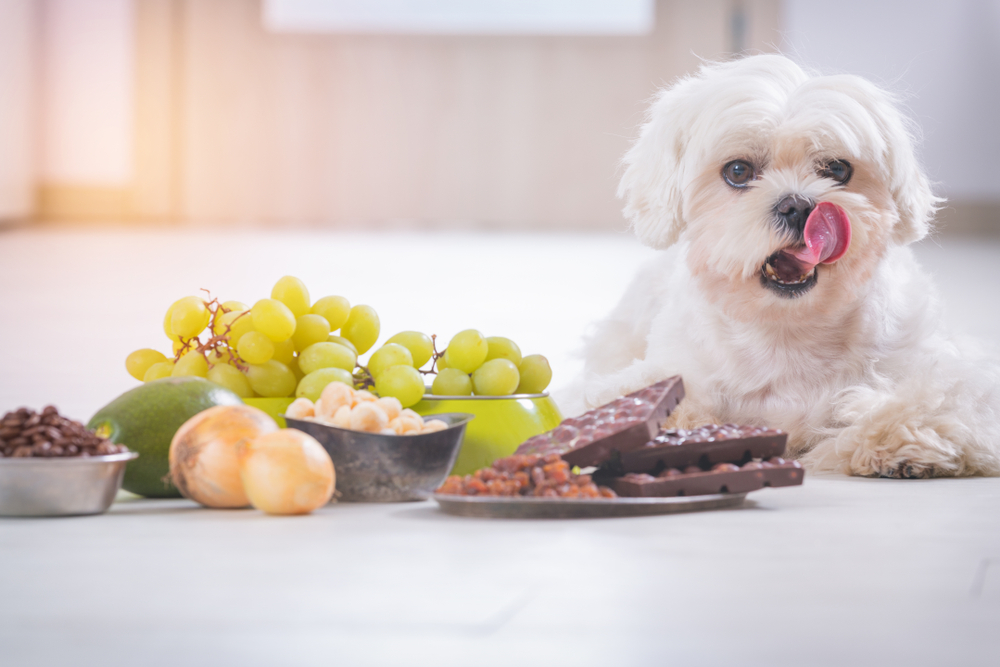
Chocolate is one of the most well-known toxic foods for pets, yet every year, thousands of dogs (and even some cats) end up at the vet after sneaking a bite of their owner’s favorite snack. The culprit? Theobromine, a compound found in chocolate that pets can’t metabolize the way humans do. The darker the chocolate, the more dangerous it is. Even a small amount can cause vomiting, diarrhea, rapid heart rate, seizures, or, in severe cases, death. For a dog, just an ounce of dark chocolate can spell trouble, and baker’s chocolate is even worse.
Veterinarians stress the importance of keeping chocolate out of reach, especially during holidays when treats are everywhere. People don’t realize how little it takes to cause a problem. One moment of carelessness could mean an emergency trip to the animal hospital. If your pet does eat chocolate, time is critical. Call your vet or a pet poison hotline immediately. Even if they don’t show symptoms right away, the effects can hit hours later. The best rule? If it’s sweet, keep it out of paws’ reach.
2. Xylitol – The Hidden Danger in Sugar-Free Products
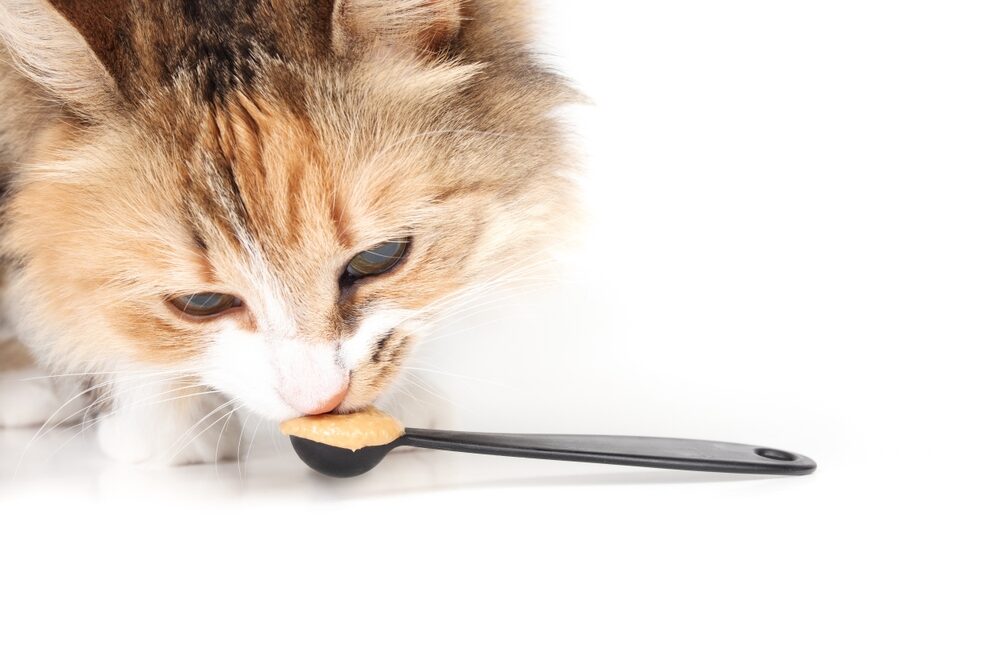
If you’ve switched to sugar-free gum, peanut butter, or baked goods, you might be unknowingly bringing a deadly toxin into your home. Xylitol, a sugar substitute found in many sugar-free products, is incredibly toxic to pets, especially dogs. Even a tiny amount can cause a dangerous drop in blood sugar (hypoglycemia) within minutes, leading to disorientation, seizures, liver failure, or even death. Unlike humans, dogs’ bodies mistake xylitol for real sugar, releasing a flood of insulin that sends their blood sugar plummeting.
Veterinary toxicologists call xylitol poisoning one of the scariest things seen in practice. It acts so fast that by the time some owners notice something is wrong, their pet is already in critical condition. The worst part? Many pet owners don’t realize xylitol is in products they regularly share with their pets, like peanut butter. Always check labels before giving your dog any human food, and if you suspect they’ve ingested xylitol, get to the vet immediately. There’s no antidote, so early intervention is key.
3. Grapes and Raisins – A Mysterious but Deadly Toxicity

Grapes and raisins might seem like harmless snacks, but for reasons veterinarians still don’t fully understand, they can cause sudden kidney failure in dogs. Unlike other toxic foods with a clear chemical culprit, scientists have yet to pinpoint what exactly makes grapes so dangerous to pets. What’s even scarier? Some dogs can eat grapes and seem fine, while others experience severe poisoning from just a handful. Vomiting, lethargy, and loss of appetite are early signs, but the real danger comes days later when kidney function begins to shut down.
Veterinary specialists say this unpredictability makes grapes and raisins one of the most frustrating toxins to deal with. We don’t have a set safe amount, so we tell pet owners to assume that any ingestion is an emergency. If your pet eats grapes or raisins, don’t wait for symptoms—call your vet immediately. Inducing vomiting within the first hour can sometimes prevent serious damage, but beyond that, aggressive treatment, including IV fluids and hospitalization, may be needed. The bottom line? Never take the risk.
4. Onions and Garlic – A Hidden Hazard in Everyday Cooking
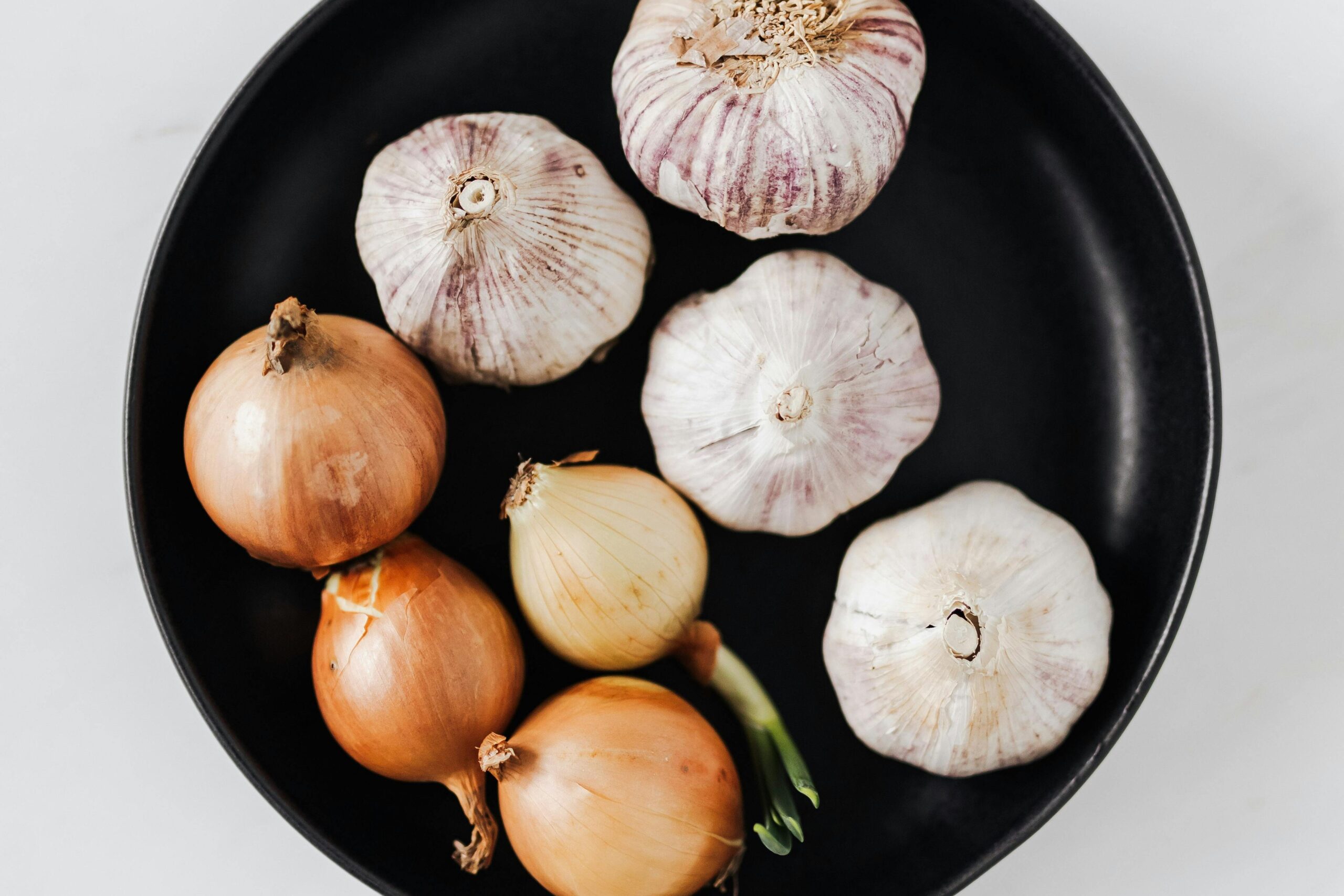
Onions and garlic add flavor to our meals, but for pets, they can be a silent killer. Both contain compounds that damage red blood cells, leading to a dangerous condition called hemolytic anemia. Whether raw, cooked, or in powdered form (like in soups, baby food, or seasonings), they can cause symptoms like weakness, pale gums, and lethargy. Cats are particularly sensitive, but dogs aren’t safe either—eating even a small amount over time can build up in their system and cause life-threatening issues.
Many pet owners don’t realize how many everyday foods contain onion and garlic. People will give their pets leftover pasta sauce, soup, or even baby food without realizing it’s toxic. Garlic supplements marketed for flea prevention can also be risky. If you suspect your pet has eaten onions or garlic, don’t wait—seek veterinary help immediately. Unlike some toxins, symptoms may take days to appear, making early treatment crucial. The safest approach? Keep these ingredients far from your pet’s food bowl.
5. Household Cleaners – Not All That Sparkles Is Safe
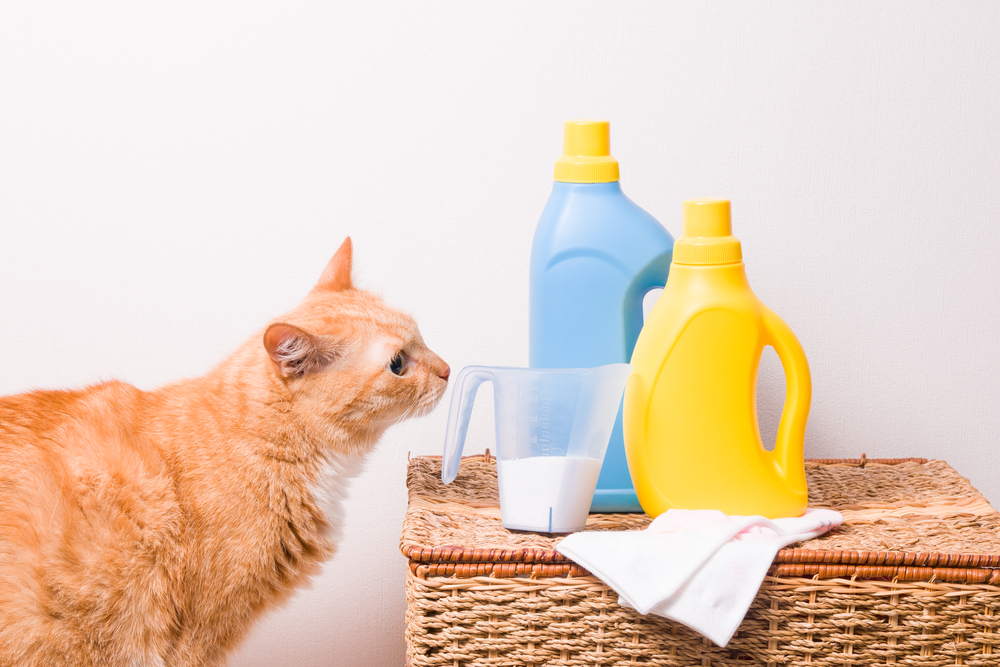
We all want a clean home, but many household cleaners contain chemicals that are incredibly toxic to pets. Bleach, ammonia, phenols, and even some “natural” essential oil-based cleaners can cause severe poisoning if licked, inhaled, or absorbed through the paws. Pets, especially cats and small dogs, are more sensitive to fumes than humans. Even walking on a freshly mopped floor and later licking their paws can lead to vomiting, drooling, difficulty breathing, or even organ damage.
Veterinary toxicologists warn that many cleaning products are deceptively dangerous. Pet owners assume that if a product is safe for babies, it’s safe for pets—that’s not always true. Toilet bowl tablets, disinfecting wipes, and oven cleaners are among the worst offenders. If you use strong cleaners, make sure pets are out of the room until surfaces are fully dry, and always store chemicals securely. Look for pet-safe alternatives, but still use them with caution. When in doubt, assume that if it’s strong enough to kill bacteria, it’s strong enough to harm your pet.
6. Medications – A Pill for You Could Be Fatal for Them
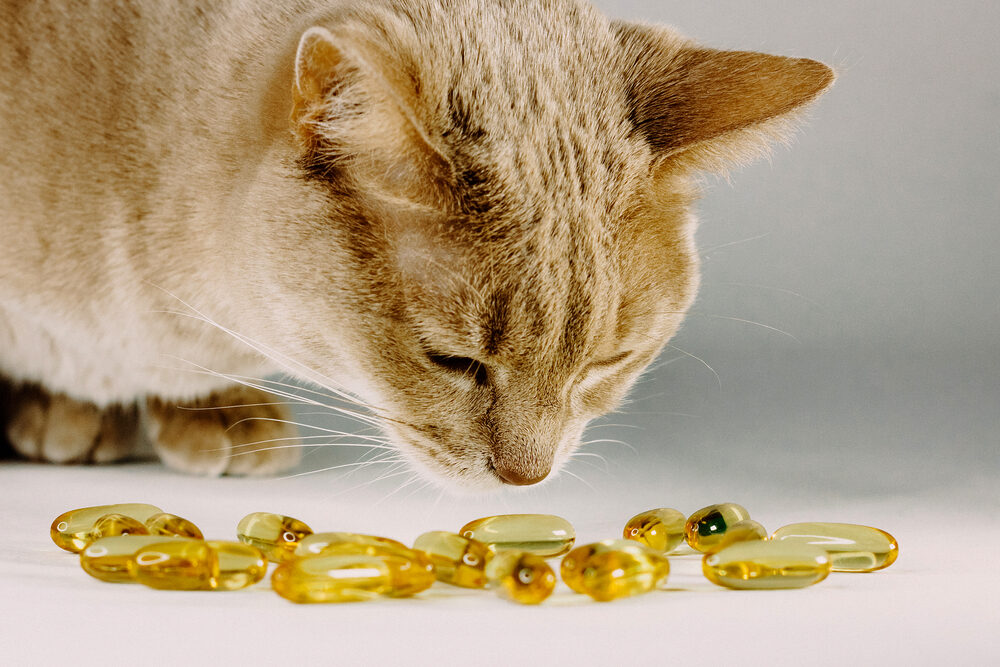
It’s easy to forget that the medications that keep us healthy can be deadly to our pets. Over-the-counter pain relievers like ibuprofen (Advil), acetaminophen (Tylenol), and naproxen (Aleve) are some of the most common causes of pet poisoning. Even a single pill can cause stomach ulcers, kidney failure, or liver damage. Prescription drugs, including antidepressants, ADHD medications, and blood pressure pills, can also have fatal effects if ingested. Cats, in particular, are extremely sensitive to acetaminophen, with even small doses causing deadly red blood cell damage.
Emergency veterinarians say one of the biggest mistakes pet owners make is assuming that if a drug is safe for humans, it’s safe for pets. People think they’re helping by giving their pet a little Tylenol for pain, but they’re actually poisoning them. Always store medications securely and never leave loose pills on countertops or nightstands where curious pets can reach them. If your pet swallows any medication, call your vet or pet poison control immediately—time is of the essence. Never attempt to treat them at home without professional advice.
7. Essential Oils – Natural Doesn’t Always Mean Safe

Essential oils have become incredibly popular for their calming and healing properties, but some of them are highly toxic to pets, particularly cats. Tea tree, eucalyptus, peppermint, citrus, cinnamon, and wintergreen oils can cause serious poisoning when ingested, inhaled, or even absorbed through the skin. Symptoms can include drooling, vomiting, difficulty walking, tremors, and, in severe cases, liver failure. Diffusers, sprays, and even some pet shampoos contain these dangerous oils, putting pets at risk even when they aren’t directly exposed.
Holistic veterinarians say many pet owners don’t realize the dangers of essential oils. Just because something is natural doesn’t mean it’s safe. Cats lack the liver enzymes needed to process many essential oil compounds, so even small amounts can build up to toxic levels. If you use essential oils in your home, keep diffusers in areas your pets can’t access and avoid applying oils directly to their fur or skin. When in doubt, check with your vet before using any essential oil-based product around your furry friend.
8. Antifreeze – A Lethal Sweet Temptation
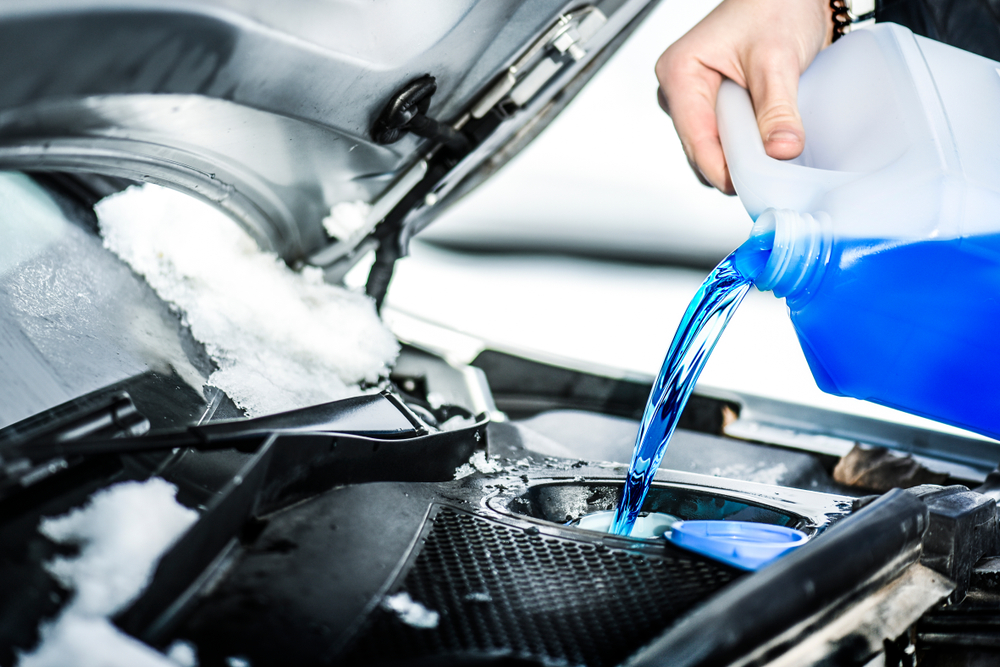
Antifreeze poisoning is one of the most tragic and preventable pet emergencies veterinarians see. The main ingredient, ethylene glycol, has a sweet taste that attracts pets, but even a teaspoon can be lethal. It quickly damages the kidneys, leading to symptoms like stumbling, excessive thirst, vomiting, and, eventually, kidney failure. The scariest part? The early signs can mimic drunkenness, causing some pet owners to miss the warning until it’s too late.
Veterinary toxicologists emphasize that fast action is the only way to save a pet exposed to antifreeze. Once symptoms progress, there’s little that can be done. If you suspect your pet has ingested antifreeze, get them to a vet immediately. Many garages and driveways have small antifreeze spills that pets might lick, so always clean up leaks and store containers securely. Safer alternatives, like propylene glycol-based antifreeze, exist and should be used whenever possible. Prevention is key—just one sip can be a death sentence.


